As many as 1.3 million people in the U.S. go to a workplace where they’re exposed to asbestos every day, according to estimates by the Occupational Safety and Health Administration (OSHA). Mesothelioma (a deadly asbestos-related cancer) has been linked to asbestos exposure in workplaces (e.g. the railroad, mining, construction, etc.).
If that wasn’t bad enough, there is evidence between a horrific synergistic effect between asbestos exposure and smoking cigarettes. In fact, several studies have found that workers who regularly smoked and were exposed to asbestos had a 50 to 80 fold relative risk increase of developing cancer over non-smoking-non-asbestos workers. This is referred to as “synergy” meaning that the combination of smoking and asbestos exposure actually work to accelerate the deleterious effects on your health.
Who is legally responsible? Generally speaking, if a current or former employee suffers from health problems caused by asbestos exposure in the workplace a suit could be filed against some or all of the following:
- The company that manufactured the asbestos or any protective equipment failed.
- Owners of the premises where the work was done. In regards to the rail industry, it failed to warn workers of the associated risks so workers were unaware that their lung cancer risk was that much greater due to the mix between smoking and exposure to asbestos fibers.
- Contractors and sub-contractors involved in work being done.
Contact an Experienced Mesothelioma Lawyer
If you or a loved one was diagnosed with mesothelioma or any other cancer and have a history of asbestos exposure, speak to an experienced mesothelioma attorney. Do not try to take on a big corporation alone. They employ teams of investigators, adjusters, and defense lawyers focused solely on mitigating their company’s liability exposure.
Our railroad mesothelioma law firm regularly represent railroad workers who were exposed to asbestos, diesel fumes, and other carcinogens. The big railroads like Norfolk Southern, CSX, Burlington Northern, etc. fight claims tooth and nail so you need a tireless advocate on your side. For example, our firm represented the estate of a railroad worker who died from lung cancer after being exposed to asbestos, diesel exhaust fumes, and radiation for over four decades. The railroad pointed to our client’s smoking history as the cause of the cancer. We disagreed and took the case to trial. A jury agreed with our position and awarded the estate $8.6 million (final verdict on appeal).
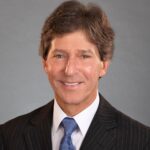
Rick Shapiro has practiced personal injury law for over 30 years in Virginia, North Carolina, and throughout the Southeastern United States. He is a Board-Certified Civil Trial Advocate by the National Board of Trial Advocacy (ABA Accredited) and has litigated injury cases throughout the eastern United States, including wrongful death, trucking, faulty products, railroad, and medical negligence claims. During his three-decade career, Shapiro has won client appeals before the VA Supreme Court, VA Court of Appeals, NC Supreme Court, SC Supreme Court, WV Supreme Court, TN Supreme Court, and three times before the United States Court of Appeals for the Fourth Circuit, underscoring Shapiro’s trial achievements. In addition, he and his law firm have won settlements/verdicts in excess of $100 million. His success in and out of the courtroom is a big reason why he was named 2019 “Lawyer of the Year” in railroad law in U.S. News & World Report's Best Lawyers publication (Norfolk, VA area), and he has been named a “Best Lawyer” and “Super Lawyer” by those peer-reviewed organizations for multiple years. Rick was also named a “Leader in the Law, Class of 2022” by Virginia Lawyers Weekly (total of 33 statewide honorees consisting of lawyers and judges across Virginia). And in September 2023, Rick was selected as a recipient of the National Board of Trial Advocacy (NBTA) 2023 President’s Award. Although many nominations were submitted from across the country, Rick was just one of eight attorneys chosen by the prestigious National Board which certifies civil trial attorneys across the U.S. Rick was also recently named to Virginia Lawyers Weekly 2024 Virginia’s Go To Lawyers Medical Malpractice. The attorneys awarded this honor are nominated by their colleagues and chosen by a panel from the publication.


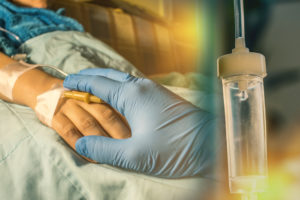
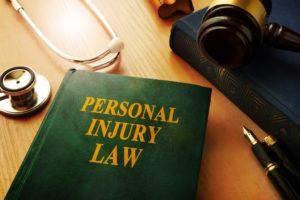

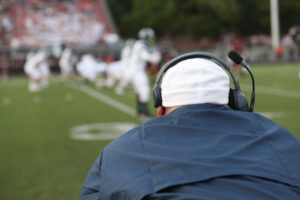

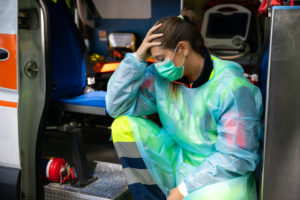

3 Comments
jack listerio
Dudette 50 to 80 relative risk increase is what we call INSIGNIFICANT! Why don't you tell the damn truth instead of using twisted epidemiology/ JUNK SCIENCE to try and scare smokers with. Its asbestos and they cant even prove that causes cancer in humans much less animals. asbestosis a naturally occurring element in nature so everyone gets a dose.....
Epidemiologists Vote to Keep Doing Junk Science
Epidemiology Monitor (October 1997)
An estimated 300 attendees a recent meeting of the American College of
Epidemiology voted approximately 2 to 1 to keep doing junk science!
Specifically, the attending epidemiologists voted against a motion
proposed in an Oxford-style debate that “risk factor” epidemiology is
placing the field of epidemiology at risk of losing its credibility.
Risk factor epidemiology focuses on specific cause-and-effect
relationships–like heavy coffee drinking increases heart attack risk. A
different approach to epidemiology might take a broader
perspective–placing heart attack risk in the context of more than just
one risk factor, including social factors.
Risk factor epidemiology is nothing more than a perpetual junk science machine.
But as NIEHS epidemiologist Marilyn Tseng said “It’s hard to be an
epidemiologist and vote that what most of us are doing is actually harmful
to epidemiology.”
But who really cares about what they’re doing to epidemiology. I thought
it was public health that mattered!
we have seen the “SELECTIVE” blindness disease that
Scientist have practiced over the past ten years. Seems the only color they
see is GREEN BACKS, it’s a very infectious disease that has spread through
the Scientific community with the same speed that any infectious disease
would spread. And has affected the T(thinking) Cells as well as sight.
Seems their eyes see only what their paid to see. To be honest, I feel
after the Agent Orange Ranch Hand Study, and the Sl-utz and Nutz Implant
Study, they have cast a dark shadow over their profession of being anything
other than traveling professional witnesses for corporate hire with a lack
of moral concern to their obligation of science and truth.
The true “Risk Factor” is a question of ; will they ever be able to earn
back the respect of their profession as an Oath to Science, instead of
corporate paid witnesses with selective vision?
Oh, if this seems way harsh, it’s nothing compared to the damage of peoples
lives that selective blindness has caused!
jack listerio
JOINT STATEMENT ON THE RE-ASSESSMENT OF THE TOXICOLOGICAL TESTING OF TOBACCO PRODUCTS"
7 October, the COT meeting on 26 October and the COC meeting on 18
November 2004.
"5. The Committees commented that tobacco smoke was a highly complex chemical mixture and that the causative agents for smoke induced diseases (such as cardiovascular disease, cancer, effects on reproduction and on offspring) was unknown. The mechanisms by which tobacco induced adverse effects were not established. The best information related to tobacco smoke - induced lung cancer, but even in this instance a detailed mechanism was not available. The Committees therefore agreed that on the basis of current knowledge it would be very difficult to identify a toxicological testing strategy or a biomonitoring approach for use in volunteer studies with smokers where the end-points determined or biomarkers measured were predictive of the overall burden of tobacco-induced adverse disease."
In other words ... our first hand smoke theory is so lame we can't even design a bogus lab experiment to prove it. In fact ... we don't even know how tobacco does all of the magical things we claim it does.
The greatest threat to the second hand theory is the weakness of the first hand theory.
jack listerio
1.0 is the NULL point in relative risk factors in statistical studies. Anything below 1.0 is considered PROTECTIVE FROM GETTING DISEASE TO BEGIN WITH. When he says 50-80 increase he means the relative risk is 1.50-1.80 or the mean increase of roughly 1.40 or less. This means theres no risk to begin with as no court will even allow a RELATIVE RISK BELOW 3.0 to even be allowed as evidence.
Synergism is impossible in nature to begin with it only happens in the laboratory.
Smokers' lungs used in half of transplants
Almost half of lung transplant patients were given the lungs taken from heavy smokers, with one in five coming from donors who had smoked at least one packet of cigarettes a day for 20 or more years
Despite this, new research shows that those people given the lungs of smokers were just as likely to be alive up to three years after transplantation as those who had organs from non-smokers. In some cases, they had improved survival rates.
"Donor lungs from even heavy smokers may provide a valuable avenue for increasing donor organ availability," says André Simon, director of heart and lung transplantation and consultant cardiac surgeon at Royal Brompton and Harefield NHS Trust.
"Our findings provide for the first time real world figures for the perceived risk of implantation of lungs from donors with even a heavy smoking history, and they show that such donor lungs may provide a much-needed lease on life to the critically ill patient whose chances of survival diminish with every day or week that passes by on the waiting list.
"I believe that candidates significantly decrease their chances of survival if they choose to decline organs from smokers."
Lung transplantation is a life-saving therapy for patients with end-stage lung disease, but a shortage of organ donors means people are dying while waiting. UK Transplant Registry data show that only 20 per cent get transplants within six months. The figure rises to 51 per cent after three years, but by that time nearly one in three patients has died waiting for a transplant.
Comments for this article are closed.